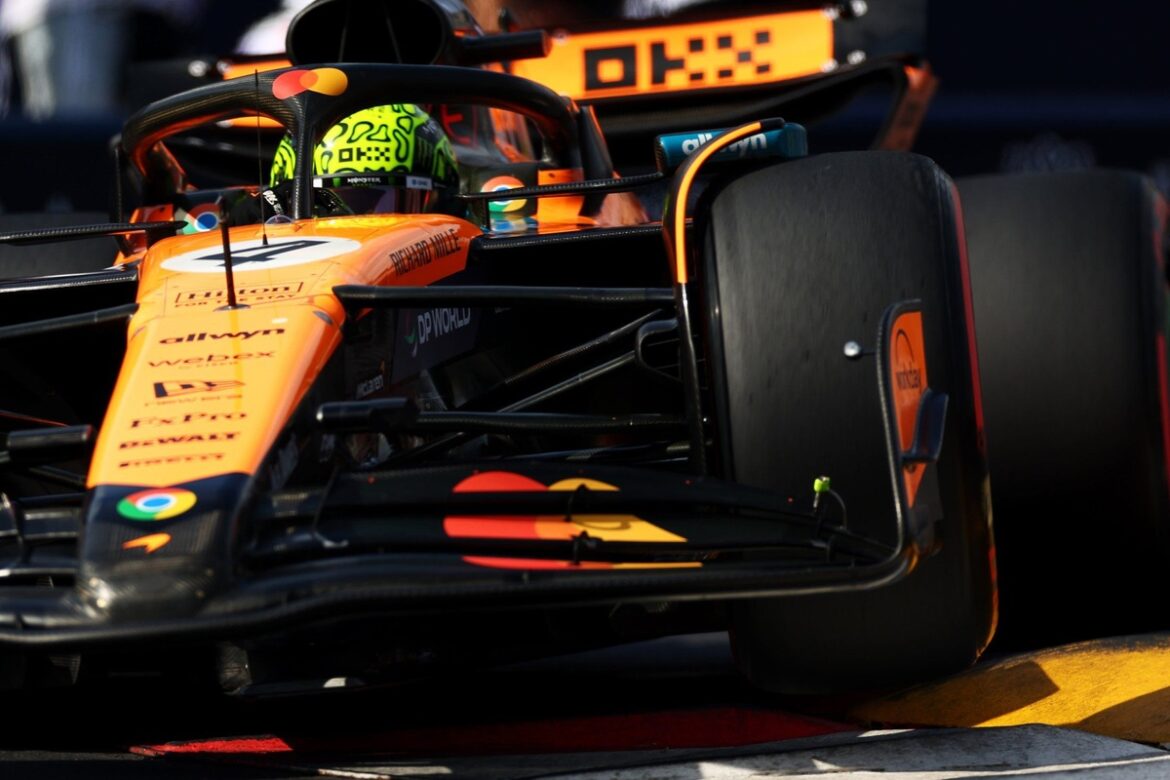Lando Norris Achieves Pole Position for Monaco Grand Prix: A Breakthrough for McLaren
In a remarkable display of skill and determination, Lando Norris secured pole position for the prestigious Monaco Grand Prix, marking a pivotal moment in his ongoing development with the McLaren team. This achievement was not just a testament to his driving prowess but also a significant step in the collaborative efforts between him and his engineering team, led by team principal Andrea Stella. Norris’s performance outshined Ferrari’s Charles Leclerc by a narrow margin of just one-tenth of a second, with his teammate, Oscar Piastri, trailing by 0.175 seconds. This pole position represents Norris’s second of the 2025 Formula 1 season and a critical moment of resurgence after a challenging period where he faced difficulties extracting peak performance from the McLaren MCL39, particularly during qualifying sessions.
Understanding the Challenges: A Journey of Growth
Norris’s admission of struggling to find harmony with his car highlights the complexities drivers often encounter in Formula 1. The intricate relationship between a driver and their vehicle is pivotal for success, especially on a demanding circuit like Monaco, renowned for its technical challenges and narrow streets. Norris had previously expressed concerns about his inability to predict the car’s behavior in response to his inputs, which sparked a deep reflection within the McLaren team. This introspection aimed to ensure that Norris could fully harness the car’s potential, which has emerged as one of the most competitive in the field.
Andrea Stella emphasized the significance of Norris’s pole position as a crucial milestone in both his and Piastri’s development journey. "It’s an important step in the process, which is not only a process for Lando but also a process for Oscar," Stella remarked. The team utilized valuable data from previous races to identify areas needing improvement, allowing Norris to capitalize on his natural speed and talent effectively.
The Importance of Consistency in Qualifying
One of the most notable aspects of Norris’s performance was his ability to maintain speed and consistency throughout the qualifying session, particularly in Q3, where many drivers often falter under pressure. Stella pointed out that this consistency was a significant indicator of genuine progress in the team’s setup. Previously, Norris had struggled to find those crucial tenths of a second when it mattered most, a shortcoming that could be detrimental in a sport where fractions of a second dictate success.
Stella noted, "Above all, he kept this speed and consistency throughout Q3, which in some of the previous races was where we tended to lose some of the rhythm." This statement underscores the importance of reliable performance in the high-stakes environment of Formula 1, where every detail can influence the outcome of a race.
Teamwork and Engineering Excellence
The success of Norris in Monaco reflects not only his individual talent but also the collaborative efforts of the McLaren engineering team. The synergy between Norris and his engineers has been instrumental in overcoming the challenges posed by the MCL39. Stella pointed out that the engineers had worked diligently to analyze and adapt the car’s setup based on the data collected from previous races. This process involved identifying the factors that hindered Norris’s performance and implementing changes that would allow him to drive to the best of his abilities.
"I think the engineers have done a very good job identifying what we should have adapted, and Lando did a phenomenal job just doing it," Stella commented. This partnership between driver and engineers is vital, as it creates an environment where both parties can learn and grow, ultimately leading to improved performance on the track.
Future Potential: More to Come from McLaren
While the pole position in Monaco is a significant achievement, Stella remains optimistic about the potential for further improvements within the McLaren team. He acknowledged that both Norris and Piastri still face challenges, particularly regarding the car’s front axle performance. Piastri, despite his impressive skills, experienced difficulties during his qualifying run, particularly at the Nouvelle Chicane, where a mistake cost him valuable time.
"I have a sense that there is quite a lot more to be extracted," Stella added, highlighting the ongoing journey of development for both drivers. The promise of future advancements and the commitment to refining the car’s performance indicate that McLaren is on an upward trajectory, aiming to maximize the capabilities of both Norris and Piastri in the coming races.
The Unpredictable Nature of Formula 1
Formula 1 is an ever-evolving sport, marked by rapid technological advancements and fierce competition. The challenges faced by drivers like Norris and Piastri are compounded by the nature of the sport, where split-second decisions and minute adjustments can have a profound impact on performance. The Monaco Grand Prix, with its unique challenges, serves as an excellent testing ground for drivers to showcase their skills and the capabilities of their cars.
As Norris continues to refine his connection with the MCL39, the insights gained from his experiences will undoubtedly contribute to his growth as a driver. The ongoing dialogue between him and his engineering team will be crucial in navigating the complexities of the sport and enhancing the overall performance of the McLaren team.
Conclusion: A New Chapter for McLaren and Lando Norris
In summary, Lando Norris’s achievement of pole position at the Monaco Grand Prix marks a significant milestone in his journey with McLaren. The collaboration between Norris and the engineering team, led by Andrea Stella, has proven to be fruitful, showcasing the importance of teamwork in the competitive landscape of Formula 1. With a focus on continuous improvement and a commitment to refining the MCL39, the future looks promising for both Norris and McLaren as they strive for further success in the 2025 season. The road ahead may be challenging, but the lessons learned and the progress made in Monaco will serve as a foundation for what lies ahead.
